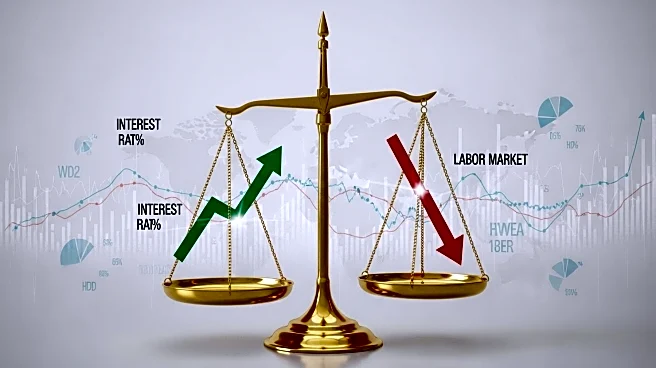What's Happening?
Morgan Stanley and Deutsche Bank have forecasted that the U.S. Federal Reserve will implement three interest rate cuts this year, following recent data indicating reduced inflation pressures. Both financial institutions expect the Fed to reduce rates by 25 basis points at its meetings in September, October, and December. This prediction comes after Fed Chair Jerome Powell hinted at potential rate cuts due to rising labor market risks. The anticipated rate cuts are part of a broader easing cycle aimed at stabilizing the economy amid slowing job market growth.
Why It's Important?
The expected rate cuts could have significant implications for the U.S. economy, affecting borrowing costs, consumer spending, and investment. Lower interest rates typically stimulate economic activity by making loans more affordable for businesses and consumers. This could lead to increased spending and investment, potentially boosting economic growth. However, the rate cuts also reflect concerns about economic stability and the need to address labor market challenges. Financial markets and investors will be closely watching the Fed's actions and their impact on economic indicators.
What's Next?
The Federal Reserve's upcoming meetings will be critical in determining the trajectory of interest rates and economic policy. Market participants will be analyzing the Fed's statements and decisions for insights into future monetary policy. The potential for further rate cuts in 2026 will also be a key consideration for economic forecasts and investment strategies.












